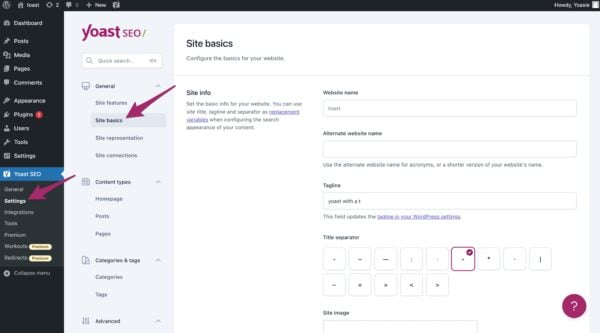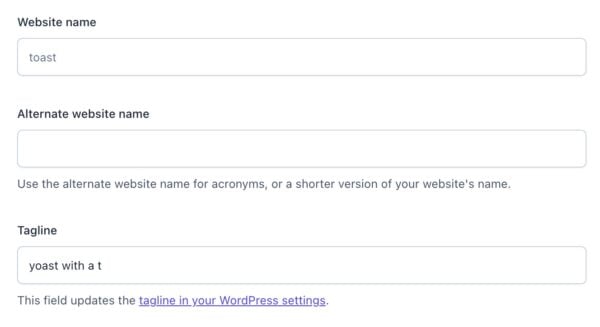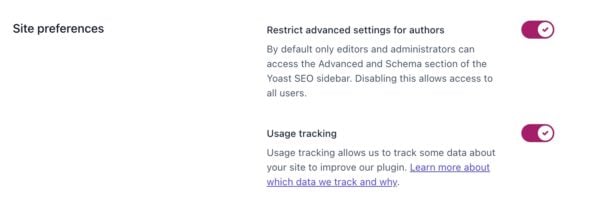Yoast SEO settings: Site basics
In this article, we’ll discuss the Site basics settings in Yoast SEO in your WordPress backend. You’ll see a video explanation, and we’ll explain all the settings on the page one by one.
Table of contents
Video: Yoast SEO settings: Site basics
Would you like to watch this video in your own language? Follow these steps to auto-translate the subtitles.
Site basics settings
You can find the Site basics settings by going to your WordPress backend, clicking “Yoast SEO” and then “Settings” in the menu on the left-hand side. Here, click “Site basics”.

The Site basics settings are divided into two sections: Site info and Site preferences. We’ll go over them one-by-one.
Do you want to know more about the other settings Yoast SEO offers? Check out the configuration guide for Yoast SEO.
Site info
Website name, alternate website name, and tagline
The website name, alternate website name, and tagline settings in Yoast SEO allow you to customize the title and tagline of your website. These fields will override the site title and tagline you have entered in the WordPress General settings.
- Website name: The main title of your site, which could be the name of your business or blog, your own name, or your personal brand.
- Alternate website name: an optional field that can be used to specify a different name for your site, for example, for acronyms or a shorter version of your site’s name.
- Tagline: a short description of your site, such as a motto or a summary of what your site offers.
The appearance of your site title and tagline on your site will depend on your theme and site settings.

Title separator
The title separator is what separates different parts of your SEO title in the search results. You can choose from options like dashes, pipes, or something else, but keep in mind that using a longer separator will take up more space in your title, leaving less room for the rest of your title. We usually recommend using a shorter separator like a dot.
You can indicate your preferred title separator in the settings, but Google ultimately decides how it will appear in the search results. Google has been replacing many title separators with regular hyphens recently, so if you want to be on the safe side, you might consider using a hyphen as your separator.

Site image
The image you set here will be used as a fallback for posts or pages that don’t have any images set. This can be helpful if you create a lot of pages and accidentally forget to add an image to one. Having a default on-brand image ensures that you’ll always have a consistent image representing your site.

Site preferences
The second section is called “Site preferences”. Let’s explore what you can do here.

Restrict advanced settings for authors
This toggle allows you to enable or disable the option to restrict access to the schema and advanced settings in the Yoast SEO sidebar. The schema settings allow you to change how Yoast SEO describes your content using schema.org code, while the advanced settings determine how search engines crawl and index your content.
These are powerful settings, so limiting access to them is generally a good idea. By default, only editors and administrators can see the schema and advanced settings, but if you want to allow users with the role of author to have access to these settings, you can switch this feature off.
Usage tracking
This option allows you to share data with us to help improve the plugin. We want to assure you that we will never sell this data, and we won’t collect any personal data about you or your visitors. If you’re interested in learning more about the data we collect, you can check this page on usage tracking in Yoast SEO.



